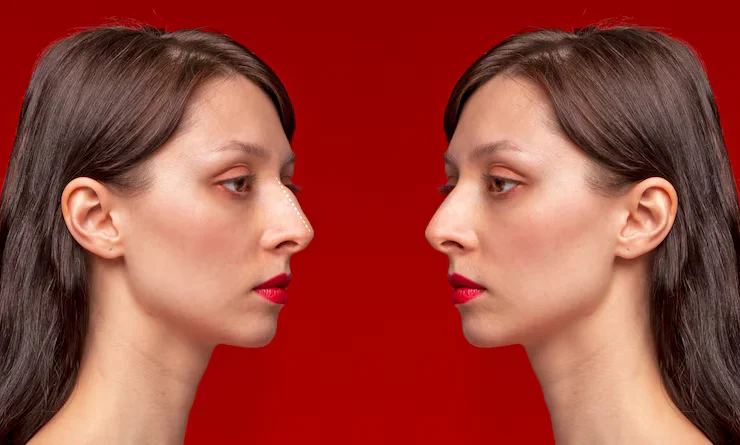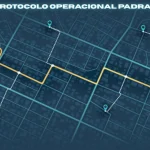It’s been a very popular cosmetic surgery procedure, meaning fine-tuning the shape of one’s nose to fit the face better. But how it is approached certainly cannot be one size fits all since ethnic background and unique nose shapes are too crucial factors in determining techniques. Often, this ethnic rhinoplasty, tailoring different rhinoplasty techniques to respect and enhance the cultural characteristics, can help the patient achieve results that feel authentic to their identity. This article finds how rhinoplasty varies for ethnicity and types of noses, and varying considerations and healing processes are presented.
What Is an Ethnic Nose Shape?
Ethnic nose shape: The overall structural characteristics of the nose are usually typical of specific racial or cultural groups. It is the total bridge height, nostril shape, tip projection, and overall width that are influenced by genetic and environmental factors over generations. For instance:
- East Asian noses tend to have flatter bridges and rounder, wider nostrils.
- African noses typically have more pronounced bridges as well as larger nostrils with a lesser nasal tip.
- Noses Middle Eastern noses may have more pronounced bridge humps. In such noses, the bridge tends to be higher, and the tip more well-defined.
These characteristics should be retained in the process of ethnic rhinoplasty; this must be achieved in terms of respecting the identity of the patient, which leads to an improvement in the beauty of the patient being in line with the culture. To most of the patients, these must be retained in such a manner that they could appear to be good-looking instead of going for a nose shape well-massed in the Western shape. The aim of ethnic rhinoplasty must be fine alterations that complement the ethnic identity and are balanced enough to provide the effect of symmetry.
Do Nose Shapes Vary Among Different Racial Groups?
Indeed, nose shapes vary immensely between racial and ethnic groups. This is through thousands of years of environmental adaptation and heredity. Some of the main differences include:
African Noses: Often wider with a low bridge and wider, more rounded nostrils. The cartilage in African noses is also softer, requiring more care during rhinoplasty not to flatten or lose the structural support.
- Asian Noses: They have a relatively low nasal bridge, and their nostrils are relatively rounder with softer cartilage. Usually, augmentations like the change in the bridge height are used to keep the result in balance and natural.
- Middle Eastern Noses: They either have high, prominent bridges or well-defined dorsal humps with defined tips. Rhinoplasty for patients of Middle Eastern descent may emphasize the reduction of the bridge without altering a well-defined nasal shape.
- Latino Noses: Latino noses can be of almost any shape, with a probably wider bridge and a broader nasal base. Rectifications in these areas are done in balance with other facial features.
The features listed above are crucial factors for good results in ethnic rhinoplasty. Taking into consideration such characteristics, surgeons will end up with an extremely individualized approach that complements their patients’ faces and cultural backgrounds.
Does Race Affect the Shape of Your Nose?
Race and ethnicity have particularly large effects on the structure of a nose because genetics and adaptations for ancestors are so dominant in determining each feature. Many of the traditional facial shapes of the nose that exist today are thought to have stemmed from climatic adaptation over hundreds of thousands of years. For example:
- Narrower nasal passages may have been an adaptation for people living in colder, drier climates to warm and humidify incoming air into the lungs.
- Wider nasal passages were present in warmer, more humid climates, where air could flow more freely.
While genetic inheritance is the primary role, these adaptations explain how evolutionary biology has shaped nasal differences among groups. Taking into account these anatomically distinct structures, rhinoplasty techniques must be adapted to meet the patient’s distinctive nasal framework. Such an approach requires skill and cultural input in order not to erase any ethnic identity with the result of surgery.
Why Does Rhinoplasty Vary Based on Your Ethnic Nose Shape?
Ethnics rhinoplasty is different from most general rhinoplasty techniques because of the structural characteristics unique to ethnicity that they keep in mind. Surgeons specializing in ethnic rhinoplasty work with techniques suited to their type, taking account of the features and objectives that would result in a unique graft. Here are some:
- Bridge Enhancement: In patients whose nasal bridge happens to be flatter, as typically seen in East Asian and African people, the elevation of the height of the bridge to a wished-for level can be achieved with implants or grafts. The changes are subtle, such that the individual is not lost.
- Narrow Nostrils: Narrowing the nostrils in wider noses, as is characteristic of African and Latino noses, can achieve a more chiselled appearance while keeping cultural identity intact.
- Cartilage Augmentation: If the cartilage in the nose is softer, which is often the case in the noses of Asian and African races, this needs more reinforcement. It will then require the augmentation of the nasal structure to maintain its effect for a long time without ever compromising functionality in the nose.
So, this ethical style of nose reshaping provides a subtle enhancement to beauty, yet it fits the normal contours and anatomy of the nose in every ethnic individual. A good surgeon would ensure it is done uniquely for each patient so that the look has been authentically balanced and, thus, empowering for the individual.
How to Heal and Recover After Ethnic Rhinoplasty
Healing post-ethnic rhinoplasty is commonly the same as in any other rhinoplasty. However, it does involve some special considerations that go specifically for the anatomy of the nose of the patient. Some recovery tips that can help in the best possible outcomes are as follows:
Strictly adhere to your surgeon’s post-op instructions, including avoiding vigorous activity and not blowing the nose, plus applying ice packs to keep swelling down.
Elevate your head while sleeping: Head elevation is helpful in reducing swelling and fluid accumulation around the nose, especially if augmentation or reconstructive procedures are undertaken on the nose.
Avoid Direct Sunlight and Heat: Prevent direct sunlight and heat from falling directly on the nose to avoid acute inflammation and potential pigmentation change, which must be avoided to ensure that the skin tone is uniform after rhinoplasty.
Expect Swelling: Swelling is perfectly normal but may happen to linger longer than expected on most ethnic rhinoplasties due to the nasal structure or modification. It may take months before the results are fully manifested.
You can attend follow-ups with your surgeon so he can monitor the healing process and secure the best outcome for his work. Ethnically distinct nose shapes may require a customized recovery schedule, and the main purpose of follow-ups is to address concerns and issues.
The above measures will help improve comfort levels while contributing to the healing process, so you will be able to achieve the desired refined look through ethnic rhinoplasty.
Embracing Your Unique Look: Achieving Natural Results with Ethnic Rhinoplasty
An appreciation for ethnic rhinoplasty, as well as cultural identity, enhances natural beauty through the transformation of nose shapes. Respecting the varying ethnic nose shapes will make people feel more authentic to their heritage. When done with a good surgeon, it brings out the best of your nose and accentuates your facial features without erasing any part of who you are.
The choice of surgeon really matters to anyone considering ethnic rhinoplasty. Such surgeons have a depth of understanding of the structural differences and nuances that make a particular nose shape unique, applying techniques that blend aesthetics with respect to that cultural uniqueness. An appropriate surgeon and approach will lead you to enjoy this journey towards greater confidence in your heritage, not to mention that you can celebrate it most beautifully.







